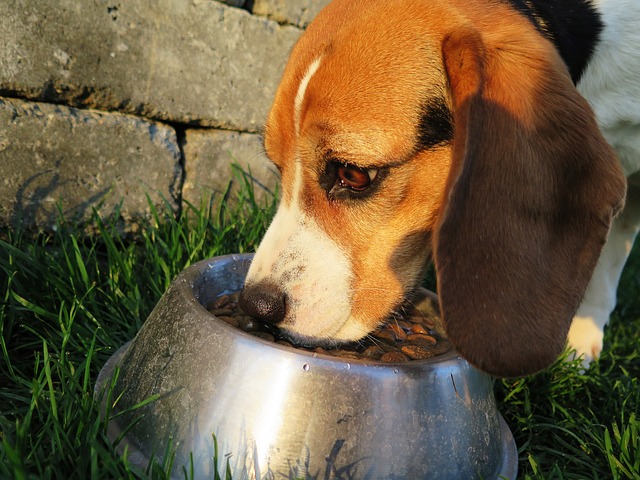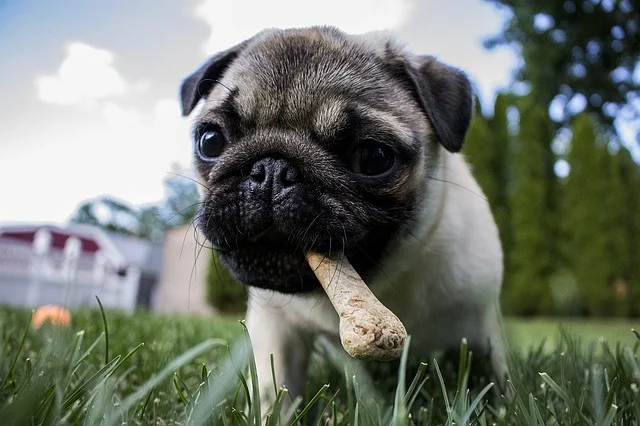
How to Choose Your Dog’s Food
Dog food is not just a matter of choosing among the countless commercial proposals. The right food for your pet requires a good knowledge of its needs and specificities. You will be able to select between kibble, food, and homemade food.
Dog food: feeding a domestic animal
If the wolf is believed to be opportunistic, able to feed on a variety of foods (even earth in times of scarcity), the dog has acquired this trait somehow. Above all, its proximity to man since the period of the hunter-gatherers has made it tolerate food and methods of accommodation unique to humans. We cannot say that the dog has become omnivorous as many foodstuffs and preparation methods are harmful to him. We can notice that:
If the wolf is said to be opportunistic, able to feed on a wide range of foods (even earth in times of great dearth), the dog has inherited this quality in some way. But above all, in its origins, its proximity to man since the time of the hunter-gatherers has made it tolerate food and ways of accommodation specific to humans. We cannot say that the dog has become omnivorous as many foodstuffs and preparation methods are harmful to him. We can notice that :
– It tolerates well :
◦ some vegetables, especially raw;
◦ fat of vegetable origin (oils);
◦ some grains.
– If the dog had a choice, it would prefer meat or fish, i.e., animal protein.
Some vegetables and a few oils have excellent effects on his health and longevity.
Physiological specificities of the dog
It is essential to know the physiological characteristics of his body to feed your dog correctly.
The dog’s jaw and teeth
Contrary to popular belief, a dog’s jaw and teeth are not designed for chewing:
– They rip and shear shreds, cutting them off if necessary.
– Then, the food is swallowed whole with the help of mucus, a fatty body that facilitates ingestion.
– As for the bones, they are simply crushed to be digested, still with the help of the mucus.
In addition, it is essential to know that chewing serves to release digestive enzymes in the human mouth. The more you chew, the better the digestion. But the dog does not release any at this level. Therefore, chewing is of no use to him.
Periodontal disease
One of the biggest enemies of the carnivorous predator is periodontal disease, i.e., dental plaque. Its most insidious effect is the microbial development it contains, which spreads to the whole body, even before causing cavities or other dental anomalies:
– Liver, kidneys, pancreas, nervous system, heart or blood, brain, sight, the whole body is likely to be affected by the mere presence of this plaque.
– Eventually, it is the brain that is affected. Death is assured, sometimes even well before, because the animal can no longer hunt or feed.
However, nature has equipped these carnivorous predators with a specially designed jaw that uses the bones as a natural “toothbrush”. Moreover, everything is planned in the morphology of the dog to avoid the stagnation of food in the mouth:
– a dentition with specific power and shape (“shear” effect) ;
– the mucus ;
– the internal production of digestive enzymes.
Bones and hard bodies

Except for the hyena, which can ingest almost the entirety of prey (including hair and hooves!) and even crush giraffe or elephant bones, the other canids have much more modest capacities at this level. However, they all practice bone-crushing as it is their only way to clean their mouths of food stagnation. There are bones, but also cartilages that allow it. Thus, we can see that :
– If large bones are sometimes carefully cleared of the meat attached to them, a wolf or coyote will never attempt to grind them up to swallow them. Only bones that fit its jaw will be, but only if there is still flesh around.
– It’s the same with the dog:
◦ A bone that is too big without meat around it may hurt his gums and teeth.
◦ Bones that are too small may get stuck in his throat.
Good to know: burying large bones that cannot be crushed is not for storage purposes but promotes bacterial growth on the bone, softening it to reach the marrow, which is not advisable due to the bacteria that can be transmitted this way and the often contaminated soil.
Feces
Remarkably, wolves and other canids waste very little food when comparing the weight of food ingested and the amount thrown away. There are 2 main reasons for this:
– First, canids prefer the foods that are most beneficial to them.
– Second, their metabolism is designed to take advantage of even the smallest nutrient:
◦ either to transform it;
◦ either to store it.
This is a matter of survival, as hunting is a dangerous and random activity. It is also necessary to be an athlete, which leads to colossal energy requirements (musculature, bone structure, heart, etc.). Therefore, in terms of droppings, this will manifest itself in the following way:
– If a large gray wolf can ingest between 3 and 4 kg of meat in a single meal, its droppings will be about 10% of this weight.
– For the dog, its droppings should be between 10 and 15% of the weight of food swallowed. Beyond that percentage, it means that his body:
◦ is not working well.
◦ consumes more than it produces.
◦ tends to weaken rather than tone up.
Thus, droppings are virtually the only reliable barometer of how well your dog is eating, along with the appearance (overweight, skinny, etc.).






1 thought on “How to Choose Your Dog’s Food”